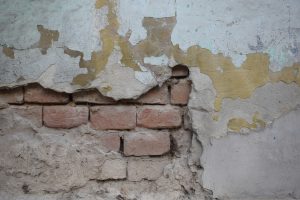Plunkett v Portier Pacific Pty Ltd (Civil Claims) [2024] VCAT 205 (5 March 2024)
VCAT has seen big developments recently, with significant cases affecting its jurisdiction and capacity to determine disputes. In the last month, the decision of Plunkett v Portier Pacific [2024] VCAT 205 (“Plunkett”) was made, having major impacts on s77 of the Victorian Civil and Administrative Tribunal Act 1998 (Vic) (“VCAT Act”). This may have further implications for the County Court, Supreme Court, and the Victorian building dispute industry as a whole.
Facts of the case
Plunkett involved a complex commercial dispute engaging several international parties. The respondents applied to have this case struck out at VCAT and referred to a court under s77 of the VCAT Act, claiming that it was complex, costly, lengthy, and that interstate, and possibly overseas bodies, were involved. Additionally, they raised the potential concern of the case involving federal law, which, as we know from Thurin v Krongold Constructions [2022] VSCA 226 (“Thurin”), cannot be heard in VCAT, and must be transferred to a court. The applicants rebutted this application, stating that it was a straightforward and fairly simple application of misleading and deceptive conduct and unconscionable conduct under the Australian Consumer Law (Victoria), of the kind that is frequently seen at VCAT [10].
VCAT’s limitations and s77
We have seen this type of case before. In Teen Entertainment Enterprise Network Pty Ltd v A&H Natoli Pty Ltd (Civil Claims) [2022] VCAT 1500, a complex proceeding remained in VCAT, and significant procedural issues were not adequately case managed. The proceeding went to the Supreme Court and then went back to VCAT for a re-hearing.
This demonstrates the complications with applying s77, and how it is difficult to determine when it is appropriate to have it moved to a court. We have seen this problem addressed before, in cases like Thurin and Bentley v Cash Resources Australia Pty Ltd [2002] VCAT 1399. Plunkett has come at a much-needed time to shed more clarity on s77’s use.
Decision
His Honour outlines the crucial principles guiding a section 77 application, particularly in relation to domestic building cases, which are expected to set the standard for similar future proceedings. The following is a succinct statement of his analysis:
- Consideration should be given regarding if ‘the case is likely to severely stretch the resources of the Tribunal’, and if the ‘subject matter is complex, involves difficult issues of fact and law, and requires pleadings and case management processes which are more typical of processes adopted by a court’ [32], are relevant to the determination of s77. This includes factors such as significant costs (e.g. surpassing the County Court’s historical $500,000 limit), or a long hearing (i.e. 10 days or longer) [42]
- Though VCAT has a wide jurisdiction, that VCAT is as appropriate a forum to determine complex or high value claims within that jurisdiction as the County or Supreme Court is an entirely valid consideration [37] – [39]
- Evidence provides that VCAT does not have the same resources as the courts do, especially when dealing with more complex and costly claims [40]
- Consideration should be given to whether the case will benefit from the case management of a single judicial officer of the court, especially if the case involves multiple parties, third-party claims, counterclaims, claims for apportionment, frequent interlocutory applications, unique legal issues or intricate facts [42]
Regarding the above principles, Woodward J affirmed the necessity of striking out the proceeding and transferring it to the Supreme Court, a forum better suited for resolving the matter.
This interpretation produces dichotomous effects. While it is advantageous for VCAT, as it will be less burdened by complex cases, it may overwhelm the County Court. Despite its jurisdiction, the County Court’s resources may be insufficient for the sudden influx of cases – cases that will most likely exceed $500,000 – leading to prolonged waiting periods and strained financial resources. Overall, however, this case may enhance the efficiency of our justice system by providing clear guidelines for s77 applications, minimizing the time spent on such a procedure, and offering clarity on case jurisdiction between VCAT and the County Court.
Now, more than ever, there is a pressing need for an effective justice system to handle domestic building cases promptly and equitably. For the countless Victorians affected by defective construction work on their homes, Plunkett will hopefully usher in a new era of fairness.
For more information, please contact Warlows Legal using the contact information below.




